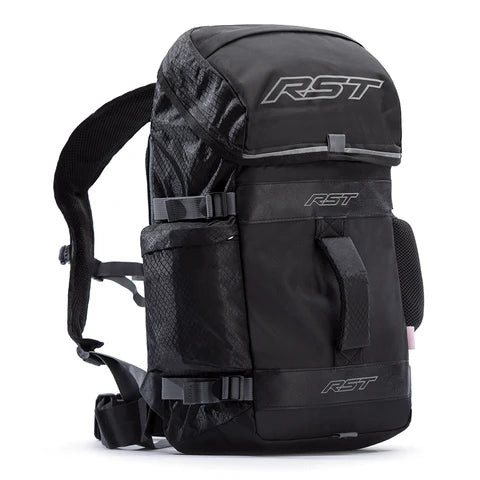Hiking Backpacks NZ: Your Outdoor Companion
Everything You Need to Know About Choosing the Best Hiking Backpack
Whether you're planning a short day hike or an extended outdoor adventure, having the right hiking backpack is essential. Designed for comfort, durability, and utility, hiking backpacks are your ultimate outdoor companion. This guide will help you understand what to look for, how to choose the perfect backpack, and why investing in a quality option is worth it.
Table of Contents
- What Is the Difference Between Hiking and Trekking Backpacks?
- What Is the Best Hiking Backpack to Use as a Carry-On?
- Is a 40L Backpack Too Big for a Day Hike?
- Does a 40L Backpack Fit as a Carry-On?
- How Do I Choose a Hiking Backpack?
- Why Do Hiking Backpacks Have Straps?
- How Tight Should a Hiking Backpack Be?
- How Do You Choose the Right Backpack for Your Height?
- FAQ
What Is the Difference Between Hiking and Trekking Backpacks?
Hiking and trekking backpacks are designed for different purposes:
- Hiking Backpacks: Smaller, lightweight, and ideal for short trips.
- Trekking Backpacks: Larger, designed for multi-day adventures with additional compartments for gear and supplies.
For a wide range of options, check out our backpacks collection.
What Is the Best Hiking Backpack to Use as a Carry-On?
The best hiking backpacks for carry-on should meet airline size requirements. Look for:
- Compact Size: Usually under 40L capacity.
- Multi-Purpose Design: Features like laptop compartments for versatility.
- Durability: Made from lightweight, robust materials.
Explore top recommendations in our guide to finding the best backpacks in NZ.
Is a 40L Backpack Too Big for a Day Hike?
A 40L backpack is generally considered too large for a simple day hike. Instead, opt for:
- 15-30L Backpacks: Ideal for carrying water, snacks, and essentials.
- Lightweight Options: Designed to reduce strain during short trips.
Does a 40L Backpack Fit as a Carry-On?
Yes, many 40L backpacks fit within airline carry-on size limits. Key tips:
- Verify dimensions against your airline's restrictions.
- Look for compression straps to reduce bulk.
How Do I Choose a Hiking Backpack?
When selecting a hiking backpack, consider the following:
- Capacity: Choose based on trip duration (e.g., 20L for day hikes, 50L+ for overnight trips).
- Fit: Ensure the backpack matches your torso length and hip size.
- Features: Look for hydration bladder compatibility, padded straps, and multiple compartments.
Why Do Hiking Backpacks Have Straps?
Straps on hiking backpacks serve several purposes:
- Load Distribution: Padded shoulder straps and hip belts evenly distribute weight.
- Gear Attachment: Extra straps secure items like sleeping bags and trekking poles.
- Stability: Compression straps keep the load compact and reduce shifting during movement.
How Tight Should a Hiking Backpack Be?
Your hiking backpack should fit snugly but comfortably. Key tips:
- Hip Belt: Tighten first to support most of the load.
- Shoulder Straps: Adjust to pull the backpack close to your body.
- Chest Strap: Use for added stability during activity.
How Do You Choose the Right Backpack for Your Height?
Choosing the right backpack involves measuring your torso length:
- Measure from the base of your neck to the top of your hip bones.
- Select a backpack size that matches your torso length.
- Look for adjustable back panels for a customized fit.
FAQ
1. What Are the Best Materials for Hiking Backpacks?
Durable materials like ripstop nylon or polyester are ideal for resisting wear and tear.
2. Are Waterproof Backpacks Worth It?
Yes, especially for unpredictable weather conditions or water-based activities.
3. Can I Use a Hiking Backpack for School or Travel?
Absolutely. Many hiking backpacks have features like laptop sleeves and multiple compartments, making them versatile for various uses.
4. How Do I Clean My Hiking Backpack?
Hand wash with mild soap and a soft brush. Avoid machine washing, as it may damage the materials.
5. How Long Should a Hiking Backpack Last?
With proper care, a high-quality hiking backpack can last 5-10 years.
6. What Size Backpack Do I Need for a Weekend Trip?
For weekend trips, a 40-50L backpack is typically sufficient to carry clothes, food, and gear.
7. Are There Eco-Friendly Hiking Backpacks?
Yes, some brands use recycled materials and sustainable manufacturing processes.
8. What Is the Difference Between Men’s and Women’s Hiking Backpacks?
Women’s backpacks are designed with narrower shoulder straps and shorter torso lengths for a better fit.
9. How Do I Prevent Back Pain with a Hiking Backpack?
Ensure proper fit, use the hip belt to distribute weight, and pack heavier items close to your back.
10. Can I Use a Hiking Backpack for Sports Activities?
Yes, sports backpacks with hydration bladder compatibility and lightweight designs work well for activities like running, cycling, or climbing.








